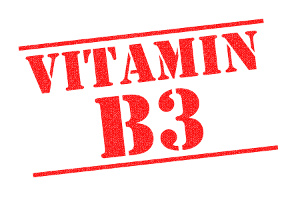Vitamin B3 boosts the energy turnover in muscle disease
 Vitamin B3 has a therapeutic effect in the treatment of progressive muscle diseases, including mitochondrial myopathy that is caused by a defective cellular energy metabolism and which has no cure, according to a study from Helsinki University.
Vitamin B3 has a therapeutic effect in the treatment of progressive muscle diseases, including mitochondrial myopathy that is caused by a defective cellular energy metabolism and which has no cure, according to a study from Helsinki University.
We get our energy-providing nutrients from dietary carbohydrates, fats, and protein. The actual energy turnover is a process that takes place in the cellular powerhouses (mitochondria) and is aided by oxygen. To begin with, the mitochondria produce concentrated energy that they store in the form of ATP (adenosine triphosphate). When a cell needs energy for e.g. muscle contraction or mental processing, ATP is broken down and the trapped energy is released. The more energy-demanding cells contain more mitochondria. Therefore, muscle cells (including heart muscle cells) and brain cells have a particularly high mitochondrial density.
In the energy metabolism, the different types of vitamin B3 (niacin) have a determining role, as they are converted into coenzyme NAD+ (or nicotine amide adenine dinucleotide). NAD+ is important for the different metabolic processes in the mitochondria and their production of ATP. It is also important for anabolic (constructive-metabolic) processes and for the repair of damaged DNA and a host of other biochemical processes.
|
Vitamin B3 boosts NAD+ in mitochondrial myopathy
To date, science has not been able to determine whether there is an NAD+ shortage in people with diseases, and it has not been possible to say if boosting NAD+ levels has a therapeutic effect on people with degenerative diseases.
However, a group of international scientists from Helsinki University has reported that levels of NAD+ are lower in blood and muscle tissue in patients with mitochondrial myopathy. Mitochondrial myopathy is a collective term for diseases that are related to malfunctioning mitochondria. The symptoms are characterized by gradually increasing muscle weakness that eventually impairs the patient’s mobility. Cramps may also occur. At this point, there is no treatment that can prevent the condition from getting worse. However, it appears that therapy with vitamin B3 (niacin) may have a promising effect, according to the researchers from Helsinki University, who write that niacin therapy can boost levels of NAD+ in patients with mitochondrial myopathy. They gave the patients very large doses of niacin (750 – 1,000 mg daily for up to 10 months) and gradually increased the dose.
That way, niacin therapy helped normalize NAD+ levels in the patients’ muscle tissue. The niacin treatment also improved the strength of the major muscles as well as the mitochondria’s ability to counteract oxidative stress. Oxidative stress is an imbalance between free radicals and antioxidants where free radicals attack cells and their mitochondria.
The study showed in various ways how the patients obtained a much more normal energy turnover in their muscle cells, similar to what was observed in the healthy controls.
This new pilot study reveals that high-dosed niacin supplementation may represent a promising and inexpensive treatment for patients with mitochondrial myopathy. Still, the scientist say that the treatment is only relevant in those cases where an actual NAD+ deficiency in the blood has been detected.
The study is published in the science journal Cell Metabolism.
Vitamin B3 sources and causes of deficienciesVitamin B3 is mainly found in protein-rich animal foods like meat, fish, liver, and eggs plus peanuts, sunflower seeds, mushrooms, peas, and avocado. |
References:
Eija Pirinen et al. Niacin Cures Systemic NAD deficiency and Improves Muscle Performance in Adult-Onset Mitochondrial Myopathy. Cell Metabolism, 2020
University of Helsinki. Vitamin B3 revitalizes energy metabolism in muscle disease. ScienceDaily. May 14, 2020
https://neuro.dk/wordpress/nnbv/mitokondriemyopati-udredning/
Search for more information...
- Created on .








